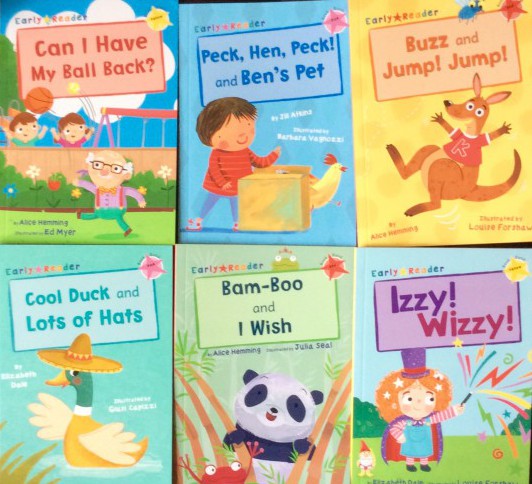Inspiring Young Readers
 posted on 01 Aug 2017
posted on 01 Aug 2017
Maverick Early Readers – a small selection
As a parent and an ex-teacher of young children I understand the importance of finding ways to making learning to read a fun experience. There are plenty of glorious non reading scheme picture books that do this but sometimes school books can be rather dry and dull in comparison. Dr Seuss famously revolutionised all this with his anarchic character The Cat in The Hat who certainly woke up the more conventional educational establishment, and made children much happier readers as well.
This colourful new series aims to do something similar because the publisher Maverick is renowned for paying attention to good design and great stories in order to entice children to enjoy books. The series is graded into eight colour bands using guidance from educational consultants and editors with fun related activities and quizzes which all add to their potential success. They have already been trialled in several schools and the publicity indicates that they were very well received by children and teachers.
In this review I’d like to look at a few from the lower bands more closely in terms of their overall aesthetic qualities, because I think that lies at the heart of any good picture book. The two lowest bands are the pink and red books and these feature two stories, with an introduction in each book that focuses on a letter shape and sound plus a few high frequency words to practice. Cool Duck and Lots of Hats by Elizabeth Dale, illustrated by Giusi Capizzi has pleasingly bold illustrations that dominate the pages which have a maximum of four words on most of them and they are set against white. I also say hooray, because in the first story there is also one page with no text which encourages the reader to look closely at what is going on in the picture.
In the second story I liked the way in which the dog leads us across the first two pages being followed by three people who are wearing different hats. There is a clever hint of wind in the air with the use of a few bold swirls and children will surely anticipate what is likely to happen. This is what reading for pleasure needs to be about – lots of potential for prediction and shared involvement in the text and the pictures.
Buzz and Jump! Jump! by Alice Hemmings , illustrated by Louise Forshaw has slightly more text but the pictures are lively and funny with plenty of detail to find. The first story shows the everyday dilemma of a bug buzzing into the kitchen and threatening to land on a particularly delicious looking freshly baked cake. The little boy catches the bug in a jar and releases it back outside, but it seems that it has returned when they hear a loud buzzing. It is quite a skill to make so much happen in only twelve pages. The second story about Ken the Kangaroo is very energetic as he jumps across from left to right, finally ending up in his bed.
Can I Have My Ball Back by Alice Hemmings, illustrated by Ed Myer is an example of one from the yellow band, all of which have just one longer story and which also introduces some punctuation. Mr Ricket is an elderly inventor whose garden shed contains all manner of interesting Heath Robinson devices like a Jam Sandwich Machine and an Egg Boiler. His garden is next to the park and so balls and other items keep coming over the fence which interferes with his creativity. By the middle of the book we can see that his shed is in chaos with broken eggs and dripping jam everywhere and his speech bubble asks ‘How can I get on with my inventions?’ You might guess that his solution is to invent an Amazing Ball Chucker which returns everything without him needing to be involved.
I really like these engaging little books that are well designed, saturated with colour and action packed pictures. I like that they use a range of authors and illustrators because this makes them even more diverse. The stories are simple but funny with lots of emphasis on looking at detail in the pictures as well as learning to decode the text. I would imagine that any young child would feel a great sense of satisfaction as they complete each one and be delighted to re- read with confidence and to move on to the next one in the relevant band.
Karen Argent
July 2017